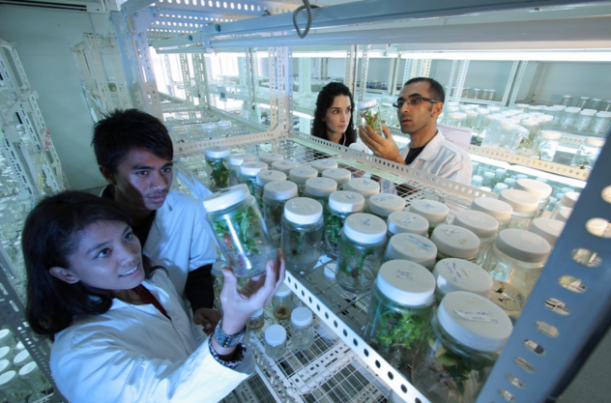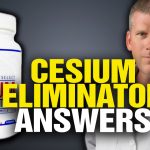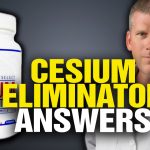
Exploring New Connections in the Lab of Tomorrow
Monday, February 15, 2016 by healthrangerinventions
http://www.healthrangerinventions.com/2016-02-15-exploring-new-connections-in-the-lab-of-tomorrow.html

Time travelers from the 1980s would not recognize the typical pharmaceutical laboratory of 2016. Large spaces filled with dedicated tabletop instruments have disappeared, as pharmaceutical companies have shut down facilities, downsized, and are outsourcing more analytical laboratory work to contract analytical service providers.
(Article by Agnes Shanley, republished from http://www.pharmtech.com/exploring-new-connections-lab-tomorrow)
As pharmaceutical facilities become modular and more flexible, instruments are shrinking. Portable devices bring more data to the warehouse, plant floor, and the lab, while wireless operation and use of radiofrequency identification (RFID) tags are being used to reduce operator error.
Data manipulation has been simplified in more user-friendly chemometrics and statistical analysis software. In addition, procedures such as chromatography have become easier and more powerful, while workhorse methods are gaining ground as “first-pass” alternatives to expensive and complex analytical methods.
To wrest value from every procedure and instrument, laboratories are embracing some of the basic concepts of lean manufacturing and optimizing workflow to reduce waste and improve efficiency. “With a move toward outsourcing and greater focus on biotherapeutics, customers are asking for more and better workflow solutions,” says John Rontree, senior director, chromatography and mass spectrometry at Thermo Fisher Scientific. “These solutions simplify tasks for outsourcing vendors, and reduce the complexity that comes with analyzing biologics,” he says.
Outsourcing analytical work
A growing number of pharmaceutical companies are outsourcing most, if not all of their analytical work. Today, stability testing, dissolution, and method development are typically outsourced, says Keith Moore, vice-president of analytical services at Metrics Contract Services.
Standard processes include high-performance liquid chromatography (HPLC) assays, dissolution testing by either HPLC or ultra violet (UV), and Karl Fischer testing procedures, says Moore. Pharmaceutical manufacturers are also outsourcing operations that require specialized equipment and highly trained users, such as mass spectrometry, X-ray powder diffraction (XRPD), and nuclear magnetic resonance (NMR) spectroscopy, he says.
Pharmaceutical manufacturers either outsource directly to contract laboratory companies or to larger contract manufacturing organizations (CMOs) that have acquired analytical capabilities. Metrics, for example, is a contract development and manufacturing organization (CDMO) with analytical testing capabilities.
According to Industry Standard Research’s reports on the state of pharma outsourcing, lab services are the seventh most widely outsourced function for small molecules and the sixth largest for biopharmaceuticals. It’s also an area that is seeing more mergers and acquisitions. Eurofins, for instance, which bought Lancaster Labs in 2011, acquired Sinensis Life Sciences, an analytical services company in the Netherlands, in 2016. At the end of December 2015, AMRI bought Whitehouse Analytical, a major analytical services company.
More powerful methods
Both pharmaceutical sponsors and their contract partners benefit from more powerful analytical methods. The workhorse method, HPLC, still dominates pharma labs, but alternatives such as UHPLC (ultra-high pressure liquid chromatography), offered by leading chromatography vendors, including Waters, Varian, Perkin Elmer, and Thermo Scientific, are gaining users. UHPLC, which uses smaller-diameter resin particles to improve resolution, speed, and sensitivity, allows more samples to be analyzed faster than with other methods. In addition, it reduces solvent requirements and waste for disposal, and requires less space, hood space, and storage.
Reducing the cost of analysis
UHPLC for analytics has been likened to continuous processing in the manufacturing world. “If continuous processing reduces the cost of goods sold, UHPLC lowers the cost of analysis,” notes Emil Ciurczak, NIR spectroscopist who published the industry’s first papers on the use of process analytical technology (PAT) in pharmaceutical manufacturing when he worked at Sandoz in the 1980s.
“With UHPLC, less material is required, and less time is needed for preparation,” Ciurczak says. “So, if, for example, you move sampling from 40 mLs to 1-2 mLs per run, you also save the cost of buying, storing, and disposing of materials,” he says. “The throughput increases are especially remarkable, with one instrument capable, in some cases, of doing the work of six conventional HPLCs,” he adds.
For bioseparations, notoriously difficult to achieve efficiently, vendors such as BIA Separations, Diosynth, Biorad, Agilent, and Merck Millipore have developed monolithic columns that improve mass transfer and reduce purification times.
Continuous and simulated moving bed (SMB) chromatography, which allows several columns to be run in parallel, has also been developed by companies that include Novasep, GE Healthcare, Tarpon Biosystems, Knauer, ChromaCon, and Semba Biosciences. Vendors claim that this approach can improve productivity by a factor of up to six, and reduce the use of resin and buffer by 75% (1).
Lower cost platforms gain use
For dissolution testing, Moore says, UV spectroscopy is often the first choice, even before HPLC, because it provides immediate data for trending and saves solvent, disposal, and other costs. It also uses one value, absorbance, to analyze data, so there is no need to transfer samples to vials. In some situations, Fourier-Transform infrared (FTIR) and Raman spectroscopy are being used to evaluate polymorphism, instead of the more challenging x-ray powder diffraction. In general, chemical imaging is becoming more important, says Ciurczak, and vendors such as Innopharma, which developed a real-time particle size imaging platform with Glatt in 2015, as well as Chemimage, Malvern, Bruker, and Perkin-Elmer, are improving their offerings in this segment.
Ion mobility spectroscopy
Use of ion mobility spectroscopy is also increasing for some applications. “It’s becoming the poor man’s mass spectrometer,” he says. Originally used in airport security applications, the technique, offered by vendors that include Smith’s Detection, Water, SelexION, and SCIEX, found its first pharma applications in cleaning validation back in the late 1990s. Today, it is finding increased use in some lower-end mass spectrometry applications, and is also taking over some HPLC applications. “If you can get the equivalent of HPLC testing in 20 milliseconds without column or solvent, why not?” Ciurczak asks. Although the technique cannot be used for stability studies, he says, it’s becoming a handy quality control (QC) tool. “In some cases, it can be more specific than Raman or near infrared (NIR), and it’s also convenient for warehouse applications.”
Use of mass spectroscopy is also increasing, however, and benefitting by improved workflows and features that can streamline processes, eliminate errors, and improve access to data, says Rontree. “The technology may become more sophisticated, but a single system today can provide more information [than was possible in the past] and reduce the potential for errors,” he adds.
Improved access to data and data processing
Increased outsourcing has changed the equation for laboratory data access and manipulation. Laboratory jnformation management systems (LIMS) have become data storage systems, from which windows can be opened to allow access to and use of data. Some contract labs offer clients access to relevant portions of their LIMS in systems such as Eurofins Lancaster’s LabAccess. In other cases, contractors use a portion of their client’s IT platforms or install required data-access systems.
Instrumentation is also being developed so that contract partners can have immediate access to data. “Certainly the cloud is playing an increasingly important role as customers look to personalization and access to private information,” says Rontree.
“There is also growing demand for more reliable approaches to method transfer,” he adds, which the company aimed to address with its AppsLab product, which allows methods to be accessed online and transferred directly without user intervention.
Another enhancement has been availability of simplified chemometrics packages. As Ciurczak notes, these can save on training costs, and also mean that every location needn’t invest $10,000 in software licenses. In a typical pharma setup today, he says, software resides at the sponsor company’s home base, but results are cached so that it can be used at a contract partner’s facility or in the field.
Read more at: http://www.pharmtech.com/exploring-new-connections-lab-tomorrow
Tagged Under: Tags: lab of tomorrow, scientific equipment





